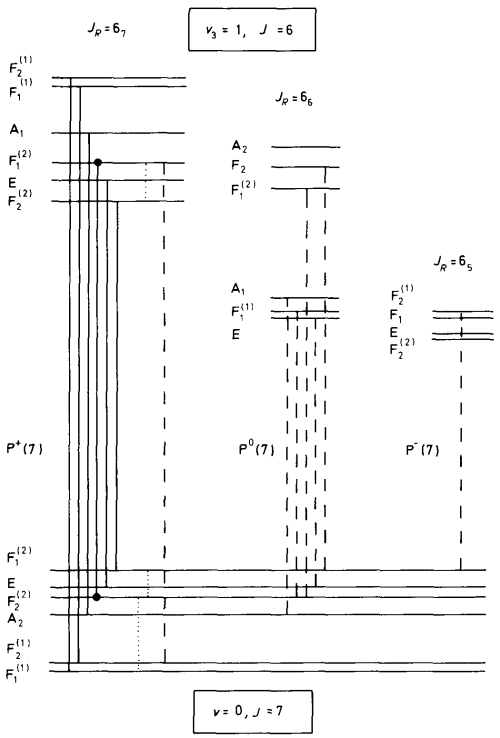Methane Symmetry Operations - Figure 5

Figure 5. J = 7 rotational levels of the vibrational ground state of CH4, J = 6 rotational levels of the υ3 = 1 vibrational excited state, and transitions observed among these levels, presented to illustrate remarks in Sec. 8, Sec. 11, Sec. 12, Sec. 14, and Sec. 16. All levels are labelled at the left by their Td rovibrational symmetry species. Upper state levels are grouped according to the value of R = J + 1, J, J − 1. If a given symmetry species occurs more than once in a group, a right numerical superscript is added as a counter. Splittings within the υ = 0, J = 7 levels are drawn approximately to scale. Splittings within each group of given R of the υ3 = 1, J = 6 levels are also drawn approximately to scale, but the scale is compressed 10−fold with respect to that of the ground state. The centers of gravities of the υ3 = 1, R = 7, 6, 5 groups are in the correct order for a positive value of ζ3, but distances between these centers of gravities for CH4 are much larger than shown. Vibrational transitions indicated by solid lines are strongly allowed (ΔR = 0); those indicated by dashed lines are weakly allowed. Pure rotational transitions, indicated by dotted lines, are very weakly allowed but have been seen in double resonance experiments using the He−Ne 3.39 µm line, which nearly coincides with the strong F1(2)−F2(2) transition indicated by small full circles on the initial and final levels.
Contacts
-
PML webmaster

